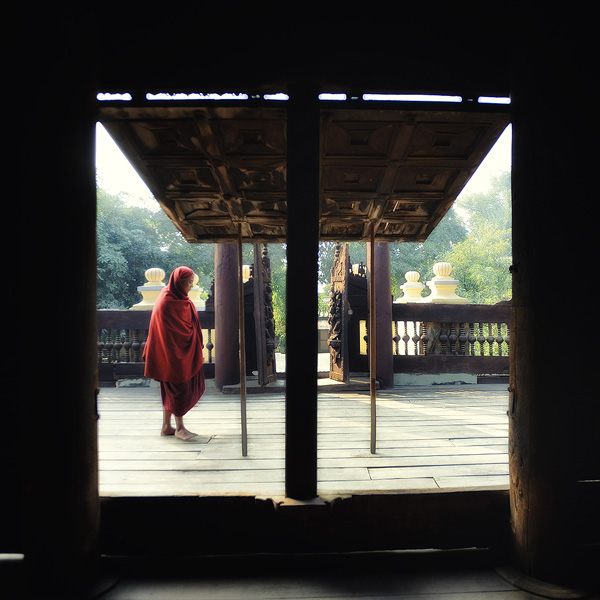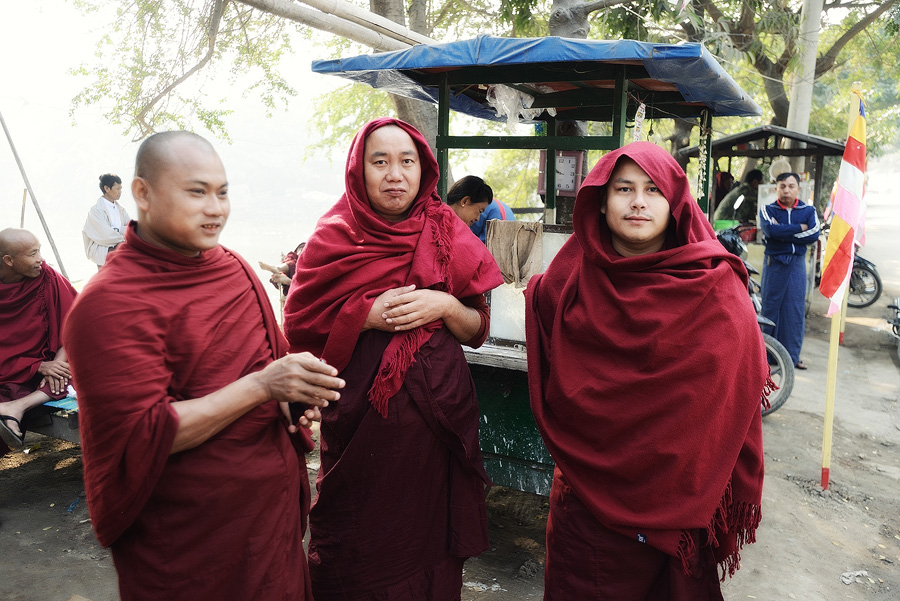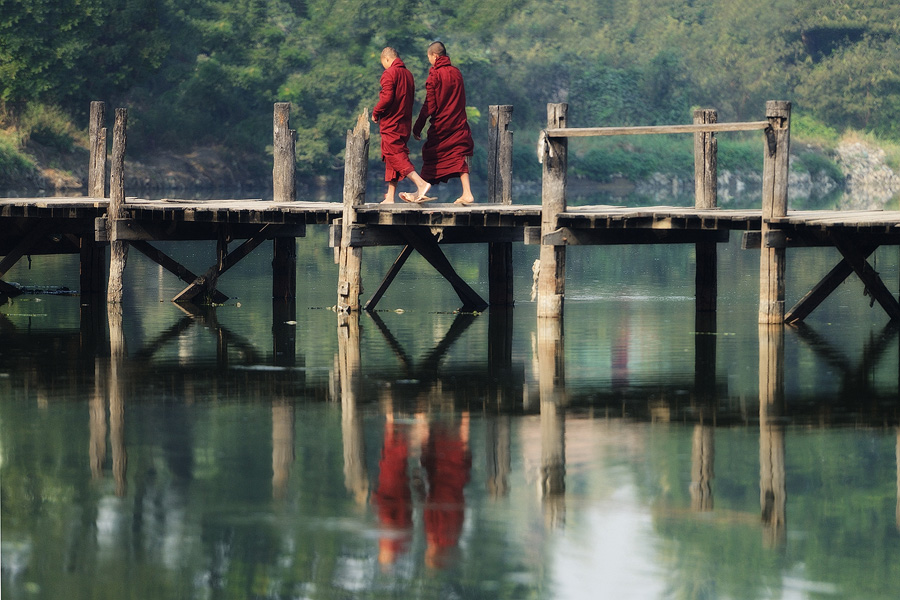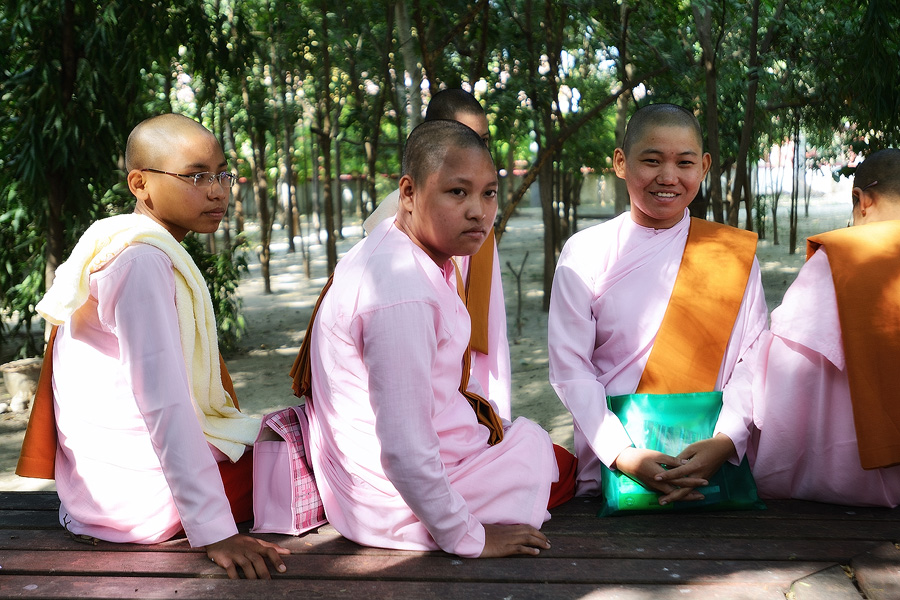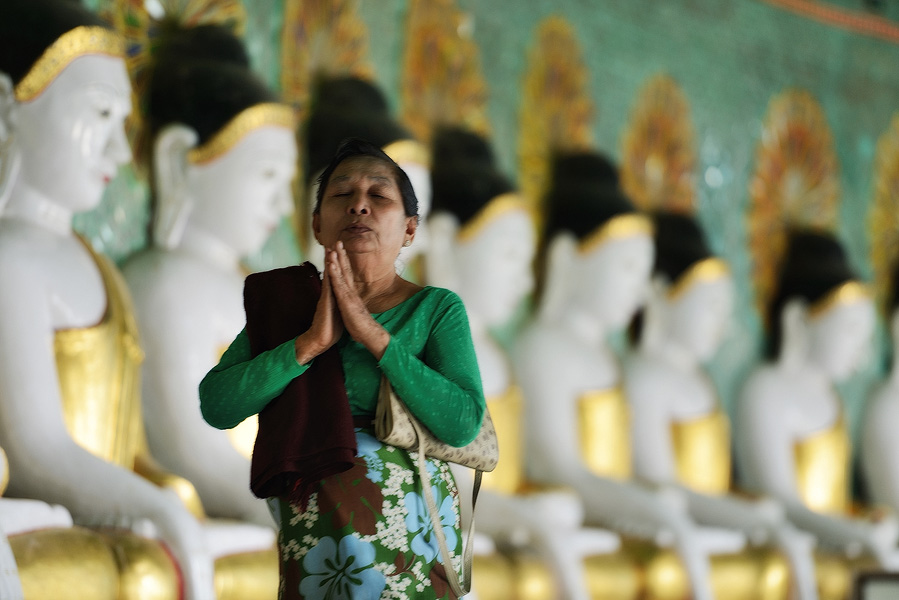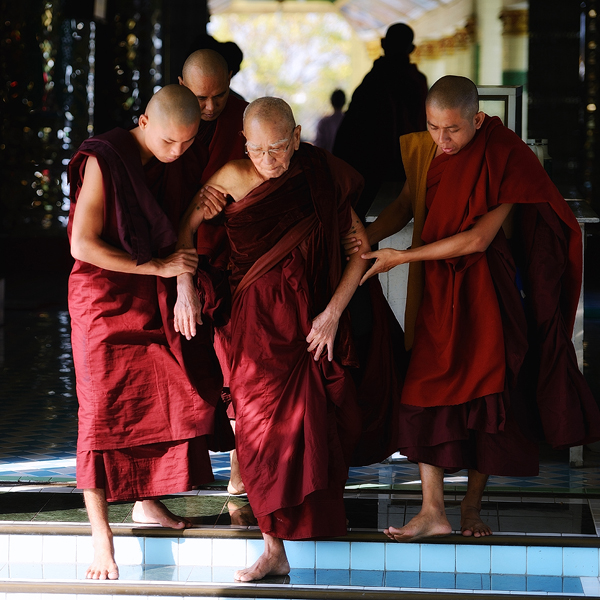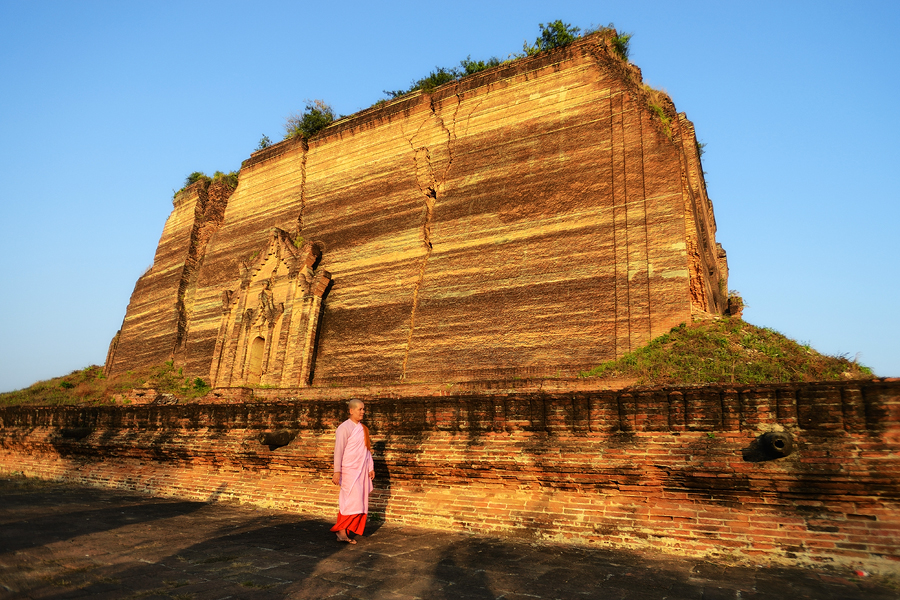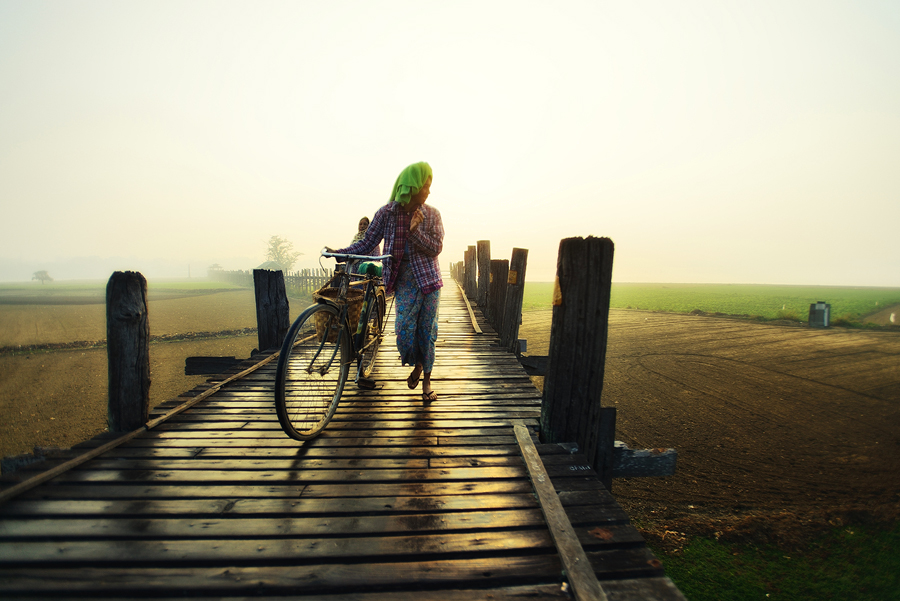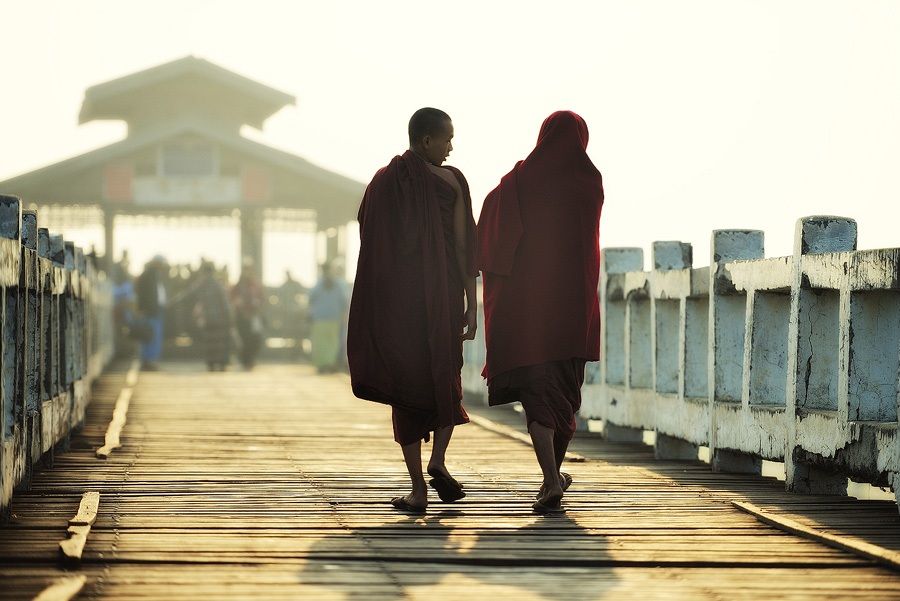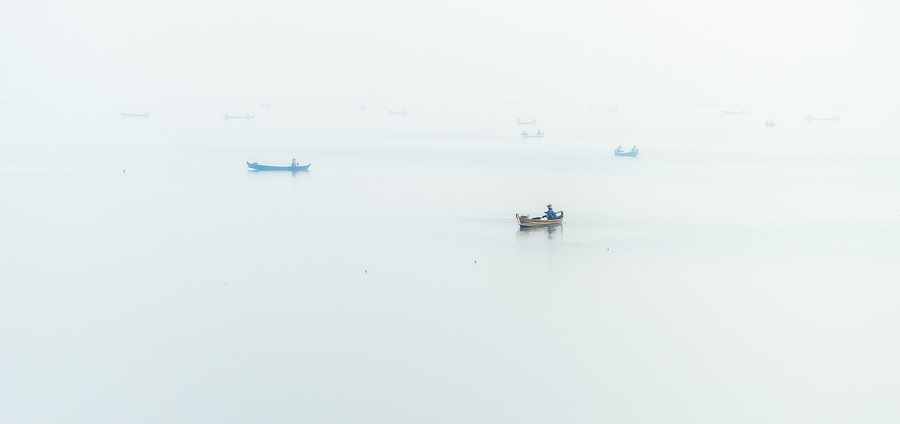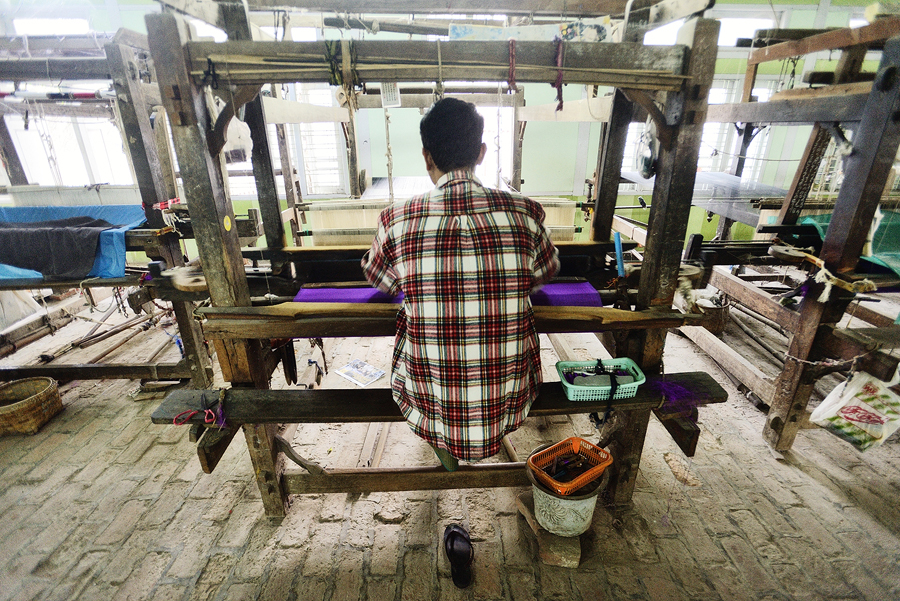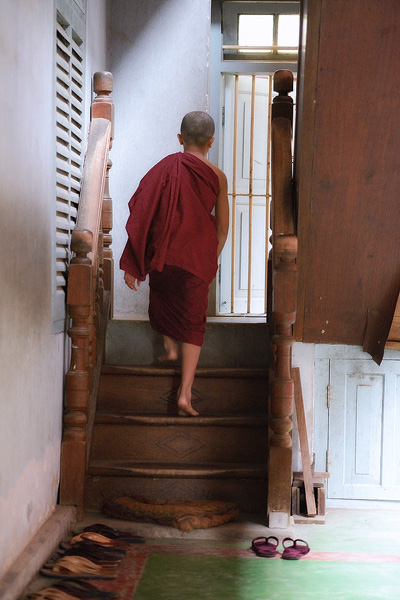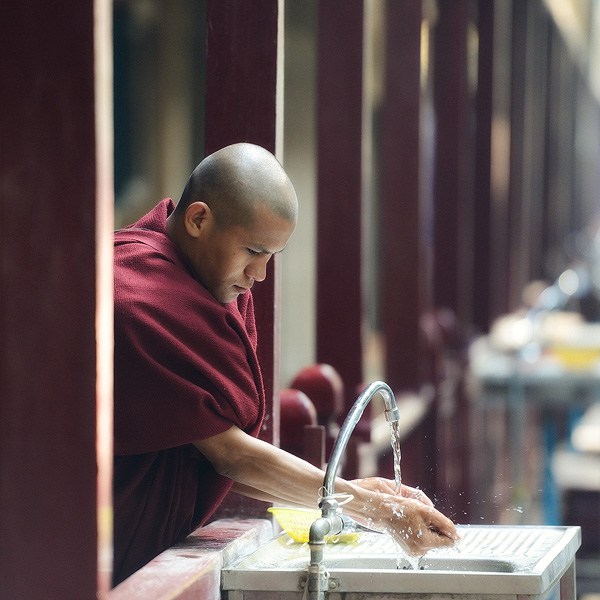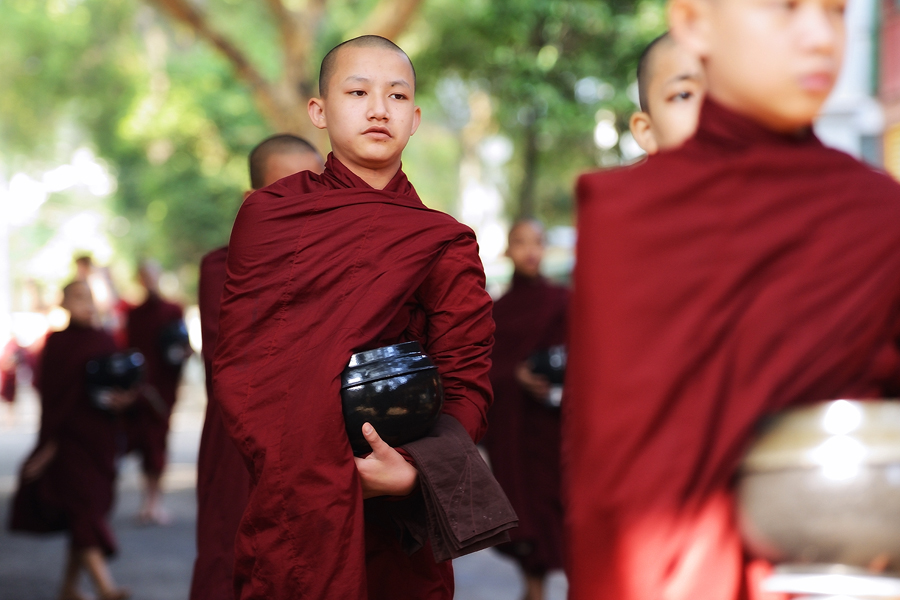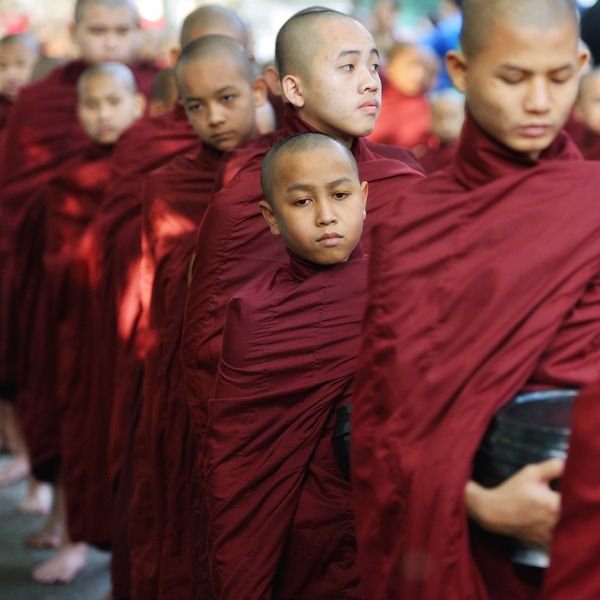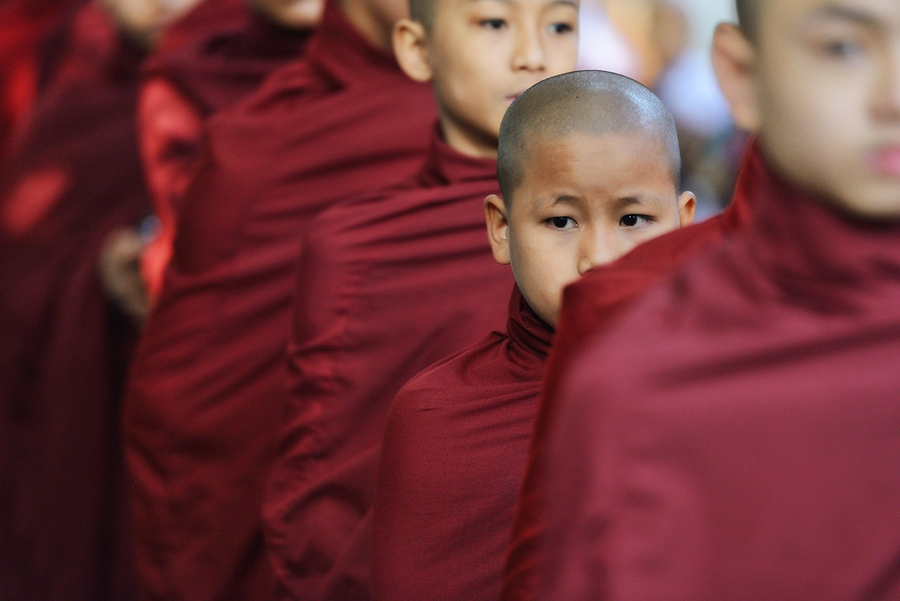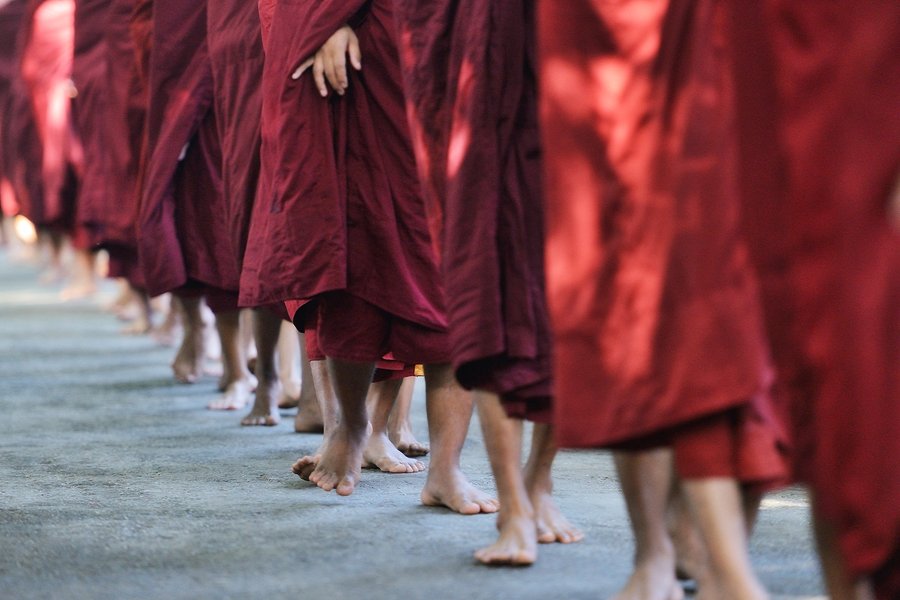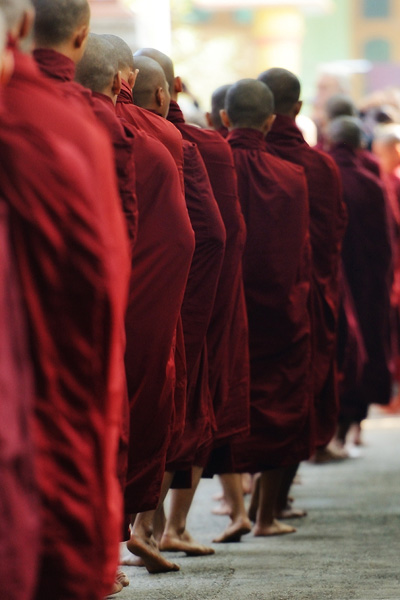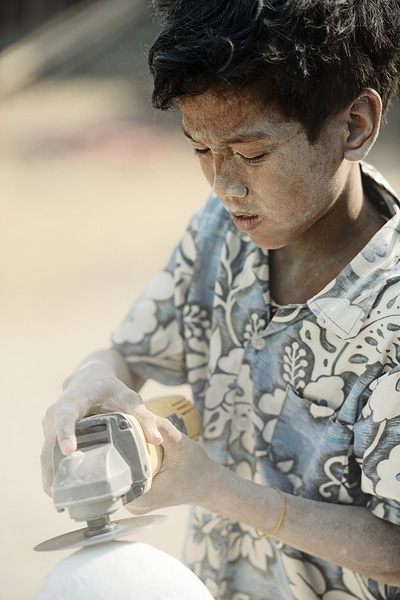MYANMAR PART 4: MANDALAY
I'm proud to announce that my book on Photographing Burma is now available for download at the iBooks store. It's got over 140 pages and 120 images, and includes information on everything I know about photographing in one of the most amazing countries on earth.
Mandalay.
The name itself evokes images of exotic places, far away lands. It's one of those magical names like Sahara, Amazon and Himalaya, which when I was growing up seemed to belong to places so distant and foreign and alien that they couldn't really exist.
Of course, as I got older, and as my fascination with travel got stronger and deeper, I realized that these places are all real and that with a little will power and dedication it was perfectly possible to actually go there and see them. Even so, Mandalay is a place name that everyone knows (thanks mostly to Kipling's poem, Road To Mandalay but I knew very little about. As I researched it for the trip, I began to realize more and more that it would be a fascinating place to spend some time, the spiritual heart of Burma, more monks and nuns as a ratio of the population than anywhere else in the country, three former capital cities in Mandalay, Amarapura and Inwe (two suburbs/towns to the south) and a city with a huge amount of traditional craft and trade.
The itinerary we had for the 2 nights we'd be in the city was pretty packed, and arriving after dark from Inle didn't help as it meant we had no real time that evening to get acquainted with the city. It's a long drive in from the airport, and as we got deeper and deeper into the city, I was blown away by the amount of traffic. We'd been in Yangon, and before that Bangkok, but I've never seen anything like Mandalay for traffic. Thousands upon thousands of scooters, apparently very little in the way of traffic lights, and not much in the way of street light either..the roads were crazy. We arrived at our hotel (possible the friendliest one we stayed in during out trip to Burma, the staff were delightful) and then immediately headed out for dinner. The streets were so dark that we took our torches with us, and had to be really careful of potholes and drains. We ate locally, then headed back to the hotel for an early night. The next day was going to be a long one.
Before arriving in Burma, I'd looked at all the things I wanted to do in Mandalay, and it quickly became evident that the most effective way of doing it was to organize a driver for the time while we were there. A lot of the places we wanted to see were very spread out and actually outside the city, and with a driver we could get around really quickly and also have the local knowledge of the driver to help us out. I'd been able to arrange this through the hotel before we arrived, and it's something I would seriously recommend people do if they ever visit Mandalay and have a limited amount of time.
Our first stop the following morning was at Shwe In Bin Kyaung, a monestrary built entirely from teak and standing on stilts in the middle of quiet, peaceful grounds.
We noticed quite a lot in Burma that no matter how busy and chaotic the streets might be, walking into a monastery always felt like walking into a haven of peace and calm. Shwe In Bin Kyaung was no exception, and we spent a lovely hour there wandering around the monastery while the birds sang in the trees around. The streets just outside were also fascinating. There were monks everywhere we looked, the streets and even the cafes were full with them. It was strange for us to see monks sitting in a cafe, drinking coffee and watching TVs in the dark corners. I approached a few and asked their permission to take their photographs, and just like pretty much everywhere else we went in Burma, they said yes.
Our next destination was the jade market. Jade is one of Burma's most famous exports, and Mandalay is pretty much at the heart of the trade. While we had no intention of actually buying any stones (we knew that in all likelihood we'd end up being sold green glass) it was a place I was curious to see.
On arrival we were amazed at how many people there are there. The market takes up a whole block, and the streets on each side of the block are buzzing with people coming and going to the market. The eastern side is actually the most interesting as it's full of market stalls where you can see the stones being cut and polished. It's a massive industry, and like so many of these kinds of places that we've seen (Morocco and Brazil were the same) there are large numbers of children working there. We saw one child polishing rocks alongside his father, and many others who just seemed to be working there alone.
Wandering around the market was a fascinating experience. We were the only westerners there, and yet nobody once bothered us, nobody stared, no one attempted to hassle us, infact we felt as if we could just walk around anywhere and talk to people, watch what they were doing, and if people noticed us at all, they simply smiled. It really is an amazing place, and one I wish we'd had more time to see, but sadly we were on a tight schedule for both of our days in Mandalay.
By now, the morning was moving on, and so we just had time for one more stop before lunch. I wanted to see the gold pounders at work as it's such a central part of Burmese life. Everywhere you go every temple is covered in gold leaf, which people save up to buy and then stick onto stupas or temples when they go there to worship. We'd seen it most obviously at Golden Rock, which was covered in gold leaf stuck there by pilgrims. But also at countless smaller shrines and temples, the gold leaf was ever-present, and the production of it was clearly a major industry in Burma.
So our driver took us to a workshop where four men were hammering lumps of gold down into paper thin strips. It's obviously hot and tough work, and just watching for ten minutes was enough to make me realize how lucky I am that I don't have to do that for a living.
After that it was time to head back to the hotel to get some lunch, but just as I was getting in the car, I heard a clunk behind me and my heart sank. For the second time in the trip, I hadn't closed my bag properly and a lens had fallen out. This time it was the wide angle 17-35mm, which was already faulty (the aperture was stuck open at f2.8). Amazingly, it hadn't smashed, and although it was pretty beat up, and the zoom ring was now really stiff, it still functioned and I could take photos with it. I noticed later that I'd also dented the screw threads, so there was no way I'd be attaching filters to it. I realized then that the lens would have to be replaced when I returned to Portugal, but for the rest of the trip, it managed me OK. Stuck at f2.8 and with zoom ring that was almost jammed, I still got some great shots with it.
Anyway, we had lunch at a cosy restaurant next to the hotel, before meeting up with the driver again to head across the river Ayerwaddy where we'd visit the areas of Sagaing and Mingun.
Sagaing is a tree covered hill next to the river, overlooking Mandalay. It's one of the most spiritual places in the country and is home to hundreds of monasteries and several thousand monks. It's a beautiful leafy place, and it's a shame we only had an afternoon to spend there, as it's somewhere that I think would reward a few days spent wandering in and out of monasteries.
Our first stop was at the Sitagu Buddhist Acadamy, an international school of Buddhism open to monks and nuns from all over the world. The main pagoda there is actually pretty new, unlike most of the pagodas we saw in Burma, but like every other Buddhist site we visited it's completely open to the public.
After walking around the pagoda we wandered into the monastery gardens, a wonderful tree covered peaceful place where we found lots of monks and nuns sitting in the shade reading. A teacher at the academy there started talking to us and we were invited to come back later to give an English class to his students. It would have been a wonderful opportunity, but sadly we had so little time. After that we bumped into a group of nuns who were waiting for a class. They'd travelled from all over the country to study here and like people we met everywhere in the country, were curious about where we were from and what we thought of their country. I actually had my iPad with me so, using an atlas app, I was able to show them exactly where Portugal was on the map, and as they all crowded around to look at the tiny screen, it struck me that we had actually travelled pretty much from the other side of the planet to be there. They asked all about the religion in our country, questions Teresa and I tried to answer as well as we could because neither of us are religious, but it was a lovely encounter, one of so many that we had traveling around the country, and we left the gardens of their monastery feeling refreshed again.
Our next stop was U Min Thonze pagoda, a temple that has been carved into the rock of the side of Sagaing hill. Outside there were lots of Burmese daytrippers as it's a popular place to visit during the holidays. Inside is a long, carved chamber with one wall totally covered with buddhas. An amazing sight!
By now the day was getting very hot, so we spent a while sitting on the cool floor inside watching people come in and out to pray in front of the buddhas.
Our final stop in Sagaing was at Soon U Ponya Shin temple, at the very top of the hill. It was busy here, the place thronging with people. There was a mixture of local daytrippers from Mandalay, along with pilgrims who'd come from all over the country to see the temple, and lots of monks too. Like so many temples in Burma the entrance is dominated by people selling trinkets and souvenirs, and the inside full of people praying to the large, golden Buddha. We made our way past and out into the courtyard, which not only had incredible views across the river to the city of Mandalay, but was also thriving with artists and monks praying.
As we continued around the temple, taking in the view, we noticed a large group of very young novice monks playing in the courtyard. They were with a couple of teachers and were incredibly excited. As it was a public holiday and the monks were on a day trip, they'd decided to give presents to the young novices, and rather than a prayer book or some spiritual icon, which is what we expected, the teachers had given them the kind of presents that young kids everywhere like. Robots and small, remote control cars!
Some of the monks were literally jumping up and down with excitement, and whilst they weren't fighting over the toys, there was lots of "discussion" about who would get what, and then more discussions about how to make them work. It was incredibly touching to see these kids who's lives are incredibly austere, and who have their days dedicated to meditation, prayer and learning, behaving just like kids from pretty much any country anywhere. Excited, curious and playing with unbridled joy, they were on holiday and enjoying their day out from the monastery. We couldn't resist taking lots of pictures.
It was starting to get late though and we still had to travel a way up river to get to Mingun, a location I wanted to be at for the last light of the day. Still, as we were leaving the temple I couldn't resist taking more photos, both of the monks we'd seen earlier get in the back of their small van to travel back to whichever monastery they'd come from, and of groups of other pilgrims, who were probably heading off to another temple of pagoda to pray.
Then we were back in the car and heading down the hill and heading north. Sagaing really was a lovely place, and as we drove towards Mingun we both regretted not having more time there as we passed so many monasteries and small villages, which all looked worth exploring. The journey was lovely, the wide river to our right, with Mandalay on the other side, and as the sun got lower in the sky and the light got warmer and warmer, before we knew it, we were arriving in Mingun.
Straight away kids surrounded the car and offered to sell us postcards, and the front of the temple was pretty busy with tourists and vendors.
I wasn't really concerned though as I'd research Mingun a fair bit and knew that what I wanted to photograph was around the back and away from the crowds.
Mingun Paya is a huge half-built stupa dating back around 200 years. Had it ever been finished it would have been the largest stupa in the world, standing around 150 meters tall, but one of the king's astronomers claimed that if the building were ever completed, then the king would die.
Even in it's incomplete form it's simply massive. The first time I saw pictures of it I thought that it had actually been built into a solid rock face, and it's only when I saw wider shots that I realized it was actually a free standing monument.
The stupa is covered in cracks from an earthquake in the early 19th century, and the side of the stupa I wanted to photograph has the biggest, most impressive cracks of all. By good fortune, this face also happens to be west facing, meaning it would catch the sun's last light, and it's also the opposite side from the entrance where all the crowds are.
I set up on a small bank that overlooked the doorway into the stupa and composed the shot in such a way that the whole face of the stupa would fill the frame, giving the illusion that it was a sheer cliff face. The same illusion I'd had when I first saw images of it.
Just composing wasn't enough though, I needed a person to give the whole thing scale, so we asked the driver if he would mind modeling for us by walking up the steps to the door.
The image captured, we packed up and set off back around the temple to the car. It had been a long day, but just at that point a nun appeared. It was a shame in some ways because I'd have loved to do the shot I'd just done with the nun in it to give it scale, but we didn't have time and I really didn't want to ask the nun to wait around while I set back up on the bank again. What we did have time to do was photograph the nun as she walked in front of the stupa as the sun's last rays warmed the face of the temple.
By the time we got back to the car we were pretty exhausted. So much so, that I forgot to photograph another small white pagoda that I'd wanted to see. Oh well, by this stage I'd pretty much decided that at some point we'd be returning to Burma again at some point in the future, and Mandalay is definitely on the agenda.
It was a long journey back, returning through the villages on the Sagaing hill, and then crossing the Ayerwaddy river as the sun set. It was getting dark as we entered the city again, and I tried to shoot a few panning shots through the window of the taxi.
We got back to the hotel, went out to a local restaurant to eat (an interesting experience, there was no menu, they just filled the table up with lots of different dishes and we weren't ever sure what half of them were, although they pretty much all tasted good). Then it was into bed early as we had an early start the following morning to be up for sunrise at the U Bein bridge in Amarapura.
The second day in Mandalay was another pre-dawn start, and getting out of a nice warm bed in the dark is never fun. Teresa hadn't slept much and decided to try and get some rest that morning, so I met the driver outside the hotel (we'd arranged to meet the previous day) and headed off to Amarapura on my own.
Amarapura is an area to the south of Mandalay, and although now it feels like a suburb of the city, in the past it was a town in its own right and actually a capital of the country.
The location I most wanted to photograph, and the reason I was dragging myself out of bed at this time in the morning, was the U Bien footbridge across the Taung Tha Man lake at sunrise.
U Bien is the longest teak bridge in the world, and I remember the first time I saw images of it, it just looked like such an unique, atmospheric place. It's become one of the most iconic images of Burma, and accordingly at sunset it's incredibly crowded as hundreds of people, both local and tourists, go there to walk on it and take photographs. I went at sunrise hoping that it wouldn't be quite so busy, and hoping that there would maybe be a little mist to add to the atmosphere.
Arriving at the lake in the pre-dawn half light I couldn't see the other side, and the bridge had a ghostly appearance. After taking a few shots of the scene I quickly found a boatman and we headed out across the lake and into the mist.
The bridge really is an amazing structure made from ancient teak and supported by posts that have been hammered into the bottom of the lake. It's actually a relatively important thoroughfare and there's a constant flow of people crossing it to get from one side of the lake to the other. Even at dawn there were plenty of people heading off to work or back home.
For the first shots, I set the tripod up in the boat and asked the boatman to hold steady while I focused on trying to get symmetrical shots with the reflections of people crossing the bridge. I was here for quite a while as the pre dawn darkness gave way to light and then mist, and although I didn't get a colorful sunrise, the mist kind of compensated in creating a mood.
When I was happy with the shots, we headed beneath the bridge to where the fishermen were casting their nets into the lake. After Lake Inle a few days before, it was fascinating to see yet another different kind of fishing technique and different kinds of boats.
Sitting in the boat drifting through the mist whilst the fishermen quietly worked on the lake around me was incredibly atmospheric. The mist closed the scene off, and the silence, which was broken only by the footsteps of people crossing the bridge or the splash as a fisherman's net hit the water, created an otherworldly atmosphere and the feeling that we could have been almost anywhere in time.
After about an hour, the mist was clearing and the light getting stronger, and I didn't think I could really shoot anything more interesting from the boat than I'd already got, so I asked the boatman to drop me off on an island in the middle of the lake which had some steps up to the bridge.
I set my tripod up here and tried to create some more abstract images of people crossing the bridge, and to take some photographs of the water buffalo ploughing fields in the the middle of the island.
As I walked up the steps to the bridge, the morning was moving on and it was beginning to get hot. The bridge was by now getting busier and busier, both with people crossing it and going about their business, and tourists arriving to take photographs of the scene. I stood and watched the scene unfolding, and imagined that little had probably changed here in the last hundred years or so. Monks crossing to the nearby Mahangandayon monastery, girls on bicycles and local workers heading to the local markets. As I stood photographing, the mist was clearing but was still strong enough to diffuse the light, and I tried to create backlit images that enhanced the morning sunlight as it reflected from the wooden bridge, which was still damp from the morning dew.
It was such an amazing place that it was proving hard to tear myself away, but there was still lots I wanted to do that morning so I knew I couldn't spend much more time on the bridge. However, before leaving I spent 15 minutes photographing the fishing boats that I'd seen earlier, but this time from the higher vantage point of the bridge. Looking directly down onto one of the fishermen who was almost underneath the bridge gave me an interesting angle as he cast his net, and further away, the mist hadn't quite cleared and the bank of fog that covered the distant banks of the lake and obscured the horizon created an illusion of these fishing boats floating in an indeterminate space where the water met the sky. It was a wonderful scene.
But eventually I had to leave, and walking back across the bridge and down to the place where I'd taken the boat hours before, I quickly found the driver (or rather I suspect he found me) and we headed into town to visit a weaving factory. I'd visited a weaving factory on Lake Inle a few days before, but this one was very different. The Inle weaving workshop had felt quite set up for tourists, but this one was a lot less orientated to tourists and selling fabric. Once again,I was surprised at how young some of the people working there seemed to be, and also how intricate and beautiful the fabrics they weaved were.
The next stop on my trip around Amarapura was Mahagandayon monastery, which I had mixed feelings about. It's one of the biggest monasteries in the country, with over two thousand monks living and studying there, but it's also one of the major tourist attractions in the city as all the monks line up with their alms bowls to file into the dining hall for lunch. Lonely Planet is pretty dismissive of the place, saying it's one to "avoid" as scores of tourist buses pull up and photograph the monks as they go for their lunch.
I'd been to quite a few monasteries by now and always found them to be calm contemplative places, and so I wasn't quite sure what to expect here. I also hoped that if I got to the monastery early before the tourists I could enjoy the place in peace a little. I arrived a little after 9h in the morning and was amazed at the size of the place. Whereas in other monasteries the monks had always been incredibly curious and friendly, in Mahagandayon the monks were so used to tourists and foreigners that they barely paid me any attention as I wandered around the different buildings.
The monks were preparing for their lunch, and obviously it takes a lot of food to feed two thousand people. I watched the monks cooking their rice, then carry huge pans of it to the tables from where it would be served. It took 5 monks to carry each of the pans and swing them up onto the tables, where two monks would continue to stir it while others prepared the dining room. By now there were lots of tourists arriving, but the scene was undeniably fascinating.
There is a street outside the main dining hall where the monks form two lines, and at the end of the street is a gate where bus after bus empties tourists who come to see the scene. By the time the monks arrived at around 10h there were hundreds of people lining the street to take photographs. To be honest, it was starting to feel a little bit like a zoo, as tourists jostled each other and occasionally the monks, to take photographs. I picked a spot on the sidewalk where I felt I wouldn't be in the way and could just sit and wait as the monks passed me, but I regularly had to stop shooting as someone came and stood in front of me or attempted to push through the lines of the monks.
The head monk there repeatedly asked the tourists to just stand beside the road and politely watch as the monks filed past, but again and again people barged into the monks, elbowed other tourists out of the way, and generally behaved quite poorly. It really isn't so difficult to just stand back and watch and take photos, we were all there for the same thing, but pretty much more than any other scene I've been to (and I've photographed some iconic locations) I've never seen such a complete lack of respect both for the subject that was being photographed and for the other people who were there to see.
So it was a mixed experience really. While it's an undeniably interesting place, and seeing the long lines of monks in their deep red robes is incredibly photogenic, the attitude of many of the tourists I saw there was a little disappointing and made the whole place feel very different from every other monastery we visited in Burma.
By the time the monks had finished passing, I'd pretty much had enough. I was also pretty hungry as I'd been up for quite a while by now and was ready for my own lunch, but there was one more place in Amarapura I wanted to see before I went back to the hotel.
Everywhere you go in Burma you'll see stone buddhas, and there are a large number of workshops in Amarapura where you can see the statues being carved by the roadside. We stopped at one and I went over and spoke to the man working there to ask if I could take photos. He was fine about it, and as I stood and watched them carving the solid blocks of stone into beautiful buddhas using angle grinders, I was amazed at the skill they have. As everywhere else in Burma, child labour is used, and one of the boys working there couldn't have been more than ten years old. They work with no masks and no goggles, and just a few minutes there had me struggling to breath as the stone dust went down my throat, and blinking as the dust got into my eyes.
It's hot, uncomfortable work, and I wonder what the lungs of these guys look like after they've been working here for a few years.
And then I was back in the car heading to the hotel in Mandalay. When I arrived I was starving, and Teresa was feeling better after getting plenty of rest and sleep. We had a while before we had to catch our flight to Bagan, but not really long enough to head out into the city again, so we decided to have a long lunch and spend some time sitting and unwinding. The vegetarian restaurant Marie Min was just around the corner from our hotel, and with a balcony overlooking a quiet side street it was a lovely place to pass a few hours with some great food and fantastic juices. Then we hopped into a taxi and headed to the airport to make the short flight to Bagan, probably the part of the trip I was looking forward to most.
We'd loved Mandalay and wished we could have had another couple of days there. We'd spent quite a bit of time visiting the outlying areas of Sagaing, Mingun and Amarapura, but would have loved more time to explore the centre of the city itself, and as we were wandering through the airport checking in our bags, we both decided that we would almost certainly plan to come back here again.

